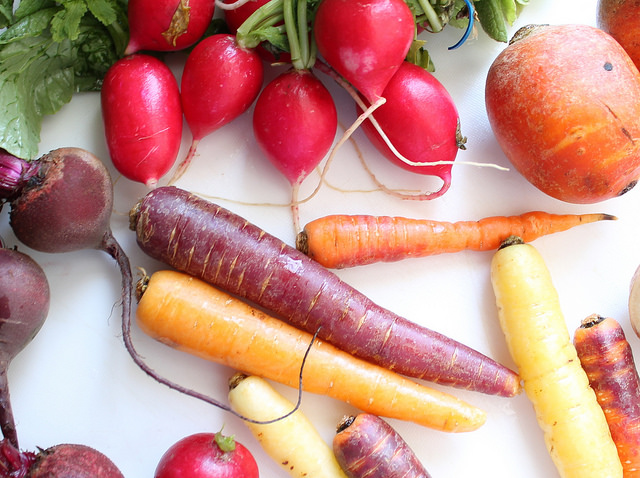Never Waste Food Again With This Unique Storage Method
Avoid wasting food by storing your produce in sand to ensure longer shelf life.
It is no secret that humans are wasteful. Especially when it comes to food. Many people do their best to diligently keep their household food waste to a minimum but it is still sometimes very difficult keep produce from spoiling. Using sand to preserve food is a very effective old method that has been forgotten by many.
The sand method can be used in a few different ways to extend shelf life of root veggies and certain firm-fleshed fruit.
If you have a refrigerator that has those large crisper drawers at the bottom, the best way to approach the sand-storing method is to get some play sand from the hardware store, and fill one of those drawers with a few inches of sand. Nestle root veggies like beets, turnips, and rutabagas, or firm-fleshed fruit like apples or Bartlett pears into the sand. Cover them until they are completely submerged in sand, and watch your produce stay fresh for months. This is a great method for storage over the winter months when you can no longer harvest and grow new produce, but want to save what you already have.
Root vegetables can touch one another in storage, but be sure not to pack them too tightly together. Air needs to circulate between each vegetable. If you are storing fruit, try to keep them at least an inch apart. You do not need to wash the fruits or veggies before storing, doing so can actually help seed decomposition faster.
Widget not in any sidebars
Sand has the ability to regulate humidity so it can keep excess moisture away from the food, thus keeping it from rotting. Buried in sand, the veggies are put into a type of stasis, and as long as the temperature remains cool and consistent, they will not go bad for a very long time.
If you have a cool basement, pantry, or cold cellar, you can store your produce just as easily in boxes with sand. If you have a rodent problem, be sure to keep the boxes off the ground.
If you are trying to store gangly roots like carrots and parsnips, immerse them vertically in the sand. Ginger and cauliflower can also be preserved this way, although they won’t last as long as root veggies will. Squashed can also be kept fresher when immersed in sand.
Be sure to remove all the green leaf bits before storing your root vegetables. Carrot fronds, beet greens, etc. must be completely cut back or they will rot the roots. It is also a good idea to keep the roots in a dry place for a day or so that their skin can toughen up before going into the sand. Carrots should not be stored anywhere near apples or pears but they can be stored close to parsnips, turnips, and rutabagas without an issue.
Napa cabbage, escarole, leeks, and celery can also be stored in sand. Their outer leaves may get dry and a bit paper, but the inner bits will remain firm, green, and crunchy for a few months.
Photo credit: Le living and co. via VisualHunt.com / CC BY
Ariana Marisol is a contributing staff writer for REALfarmacy.com. She is an avid nature enthusiast, gardener, photographer, writer, hiker, dreamer, and lover of all things sustainable, wild, and free. Ariana strives to bring people closer to their true source, Mother Nature. She is currently finishing her last year at The Evergreen State College getting her undergraduate degree in Sustainable Design and Environmental Science. Follow her adventures on Instagram.



